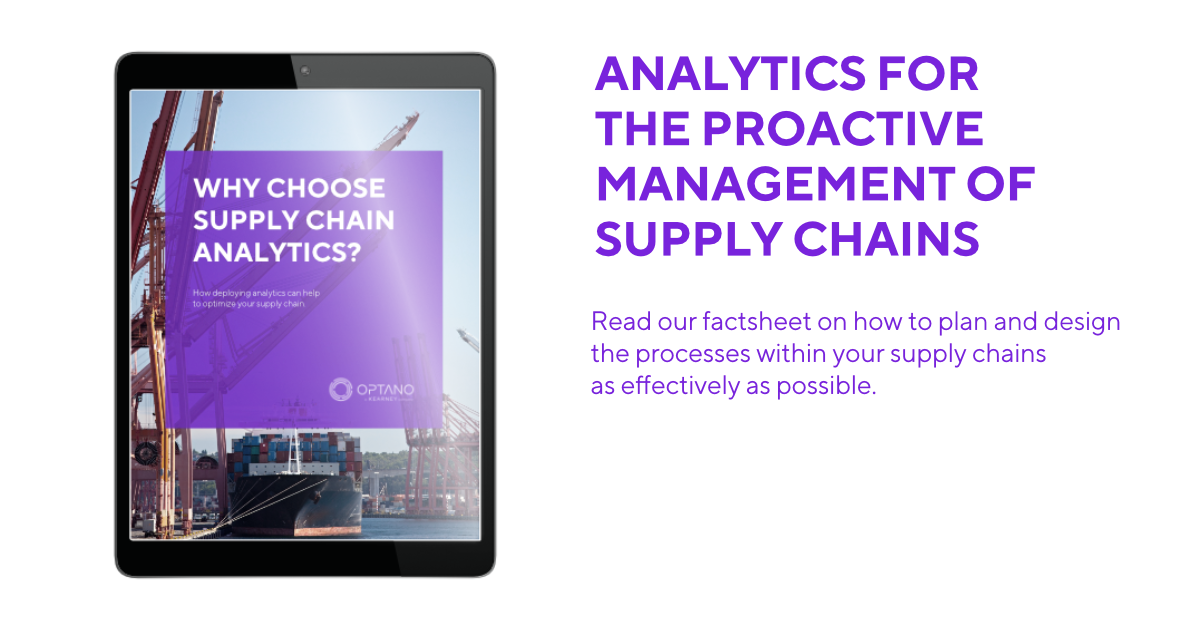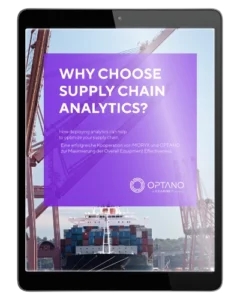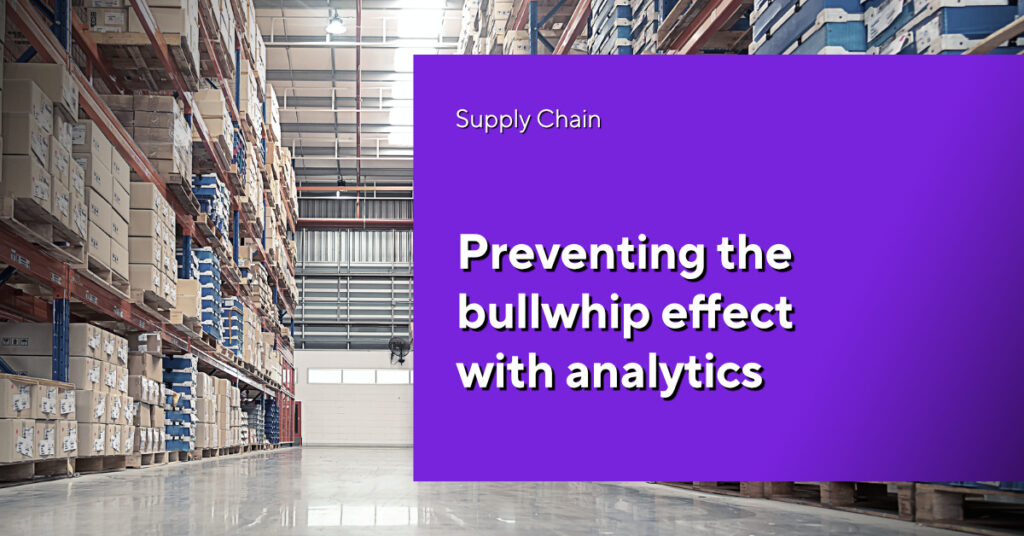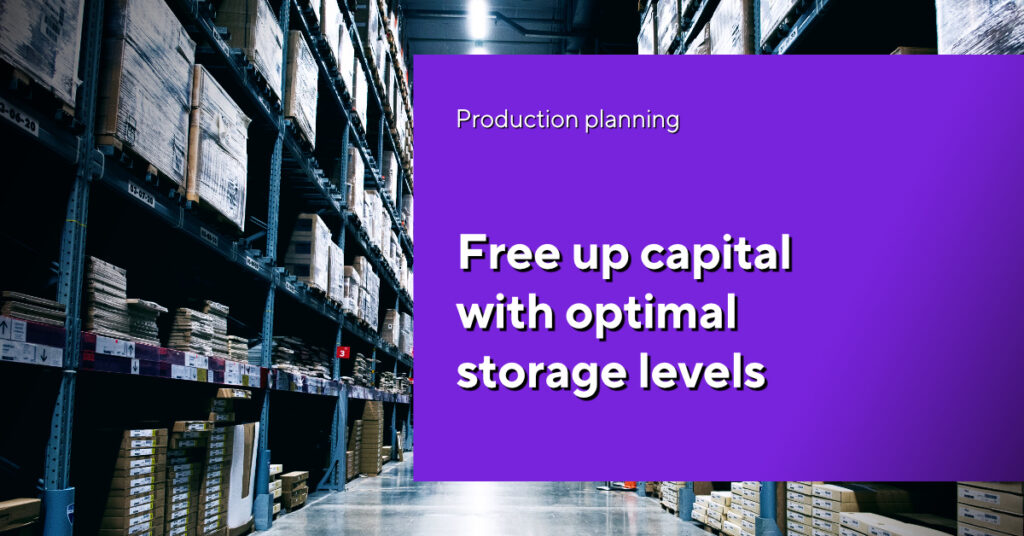Adaptive SC
Network
Recently, I was standing in front of a full shelf of flour sold at discount prices in our local supermarket and suddenly became thoughtful: what was so lovelessly stacked up for sale at mere pennies was traded like “white gold” at the beginning of the coronavirus pandemic. So everything was back to normal in terms of supply? Far from it! We have had to get used to long delivery times or bottlenecks for many everyday necessities. Anyone who is currently waiting for an ordered piece of furniture or a new car will be familiar with this – not to mention the situation with some medicines.
That’s why we want to take another look at supply chains in this blog post and talk about why it has become so important for them to be able to adapt to changing situations.
On the way to the polycrisis
Before the coronavirus pandemic, supply chains were designed for maximum efficiency. This meant that they were often both long and inflexible. Purchases were made as cost-effectively as possible, long transportation times were factored in and economies of scale were exploited with foresight. And as long as the external framework conditions were known and remained stable, this system worked extremely well for years. Until … yes, until it stopped working at some point and disruption entered the world stage with a vengeance.
Between 2020 and 2024, we had a pandemic, numerous natural disasters such as droughts, forest fires and several floods. But also on a political level, the system as we knew it was shaken to its foundations. Nationalism and protectionism are returning in many countries. Punitive tariffs and trade wars are the order of the day. Armed conflicts and open warfare are making headlines in many parts of the world. Terrorism and cyberattacks are keeping the world on tenterhooks. In addition, the spectre of inflation has returned and the growing shortage of skilled workers poses a lasting threat to the prosperity of industrialized nations. These are all gloomy developments and quite a few people are already talking about a looming polycrisis in this context – a crisis that seems to be preparing to become the new normal.
But what options do supply chain managers have to counter this development?
Measures for adaptive supply chains
There are various measures to make supply chains more flexible. However, it is important to be aware that these are more like damage limitation measures. The aim is to minimize the damage caused by disruptive events and to maintain a defined service level as cost-effectively as possible.
Risk assessment in advance
Hedging risks results in costs. It is therefore important to carefully examine the risk potential in advance. A company’s risk tolerance depends on various factors. These include the corporate strategy, the markets and the potential costs of failure in procurement. A supplier of inexpensive mass products should buy particularly cheaply, even if the risk of default increases. A premium supplier should act more cautiously in order to avoid loss of prestige due to delivery failures. It is also worth checking whether other stakeholders, such as customers or the state, can cover some or all of the costs of hedging.
Focus on core areas
This section ties in with the risk assessment considerations. The question arises as to whether it is necessary to comprehensively protect the entire supply chain or whether it is sufficient to limit oneself to certain core areas. Is it perhaps sufficient to focus protection on individual products or locations? An example of this would be a detergent manufacturer that produces both a premium and a no-name product on identical machines. In the event of a disruptive event, the manufacturer could reallocate resources in favor of the premium product. For example, it could accept the loss of the low-margin segment in order to protect its premium brand instead of discontinuing production in both segments.
Multi-Sourcing
By distributing orders among several suppliers, economies of scale are lost in price negotiations. On the other hand, the risk of supplier failure is spread. When selecting suppliers, it should be borne in mind that the probability of default increases with the length and complexity of the supply chain. It can be worthwhile to build up a supplier portfolio that combines suppliers with short and long supply routes from different countries. Existing supplier relationships should be regularly reviewed and new sources should be continuously sought and identified.
More interesting articles
Creating transparency in the supply chain
Supply networks can be very complex, and it is often a challenge for supply chain managers to maintain an overview of supplier relationships at the first tier. A deeper understanding is required to identify potential disruptions in the supply chain at an early stage. Ideally, planners, supply chain managers and buyers should also keep an eye on the second and third tier – i.e. the suppliers’ suppliers – when making decisions. Key figures such as incoming orders, stock levels of the required raw materials, production progress, shipping details, deviations from the plan and much more are the information that an early warning system needs in order to warn of possible failures in good time. One conceivable reaction to such a warning could be to increase safety stocks of certain components and raw materials.
Increase in safety stocks
Increasing safety stocks in the supply chain can increase flexibility and security, as they can be used as a buffer against disruptions. This makes the supply chain more robust and delivery times can be shortened. However, higher stock levels lead to higher storage costs and higher capital requirements. In addition, companies can operate more inefficiently if they rely too heavily on inventory and fail to address key issues in the supply chain. A balanced approach is therefore important to weigh up the advantages against the potential disadvantages.
AI-supported supply chain planning
The vast amount of information, data and decisions makes conventional planning with Excel spreadsheets almost impossible. With AI-supported planning, supply chains can be designed from countless possibilities in such a way that they optimally contribute to goals such as flexibility, resilience and cost optimization. Based on historical, current and forecast data, the system uses machine learning to identify the areas to be protected and calculates the costs of a possible solution to increase resilience. Thanks to prescriptive analytics, it not only creates the optimum plan for the required security level, but also only considers the variants that are also as cost-efficient as possible. In addition, planners and supply chain managers receive specific recommendations for action in order to achieve the defined goals. For strategic planning, decision-makers can also simulate the effects using what-if scenarios and break them down into all relevant key figures.
In recent years, many companies have taken measures to secure their supply chains and keep them flexible. However, this has greatly increased the complexity of supply chain planning and management. The good news is that the greater the complexity, the greater the potential for savings through the use of AI-supported planning and mathematical optimization. Companies that address the possibilities of such an approach at an early stage will be able to claim a sustainable competitive advantage.
As far as flour is concerned, it sometimes seems as if we need the shortage to make us appreciate again how incredibly privileged we are in Western societies. Flour is (once again) in abundance in every supermarket – let’s be grateful for that!
Do you already know our Factsheet on the topic?

In our factsheet “Why choose supply chain analytics?” we describe the different types of supply chain analytics. You will discover how supply chain analytics works and how it can help to optimize your company’s supply chain.
To obtain our factsheet, all you need to do is enter your contact details in the space below. A pop-up window will then open to download the whitepaper. Please note that by providing us with your email address, you agree that we may contact you on this topic. You may revoke this agreement at any time by contacting privacy@optano.com.







